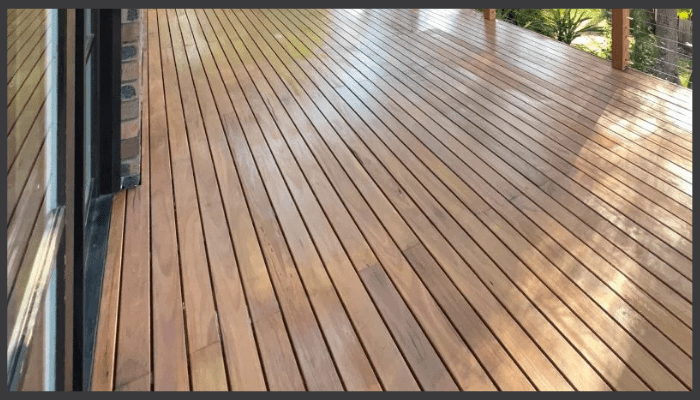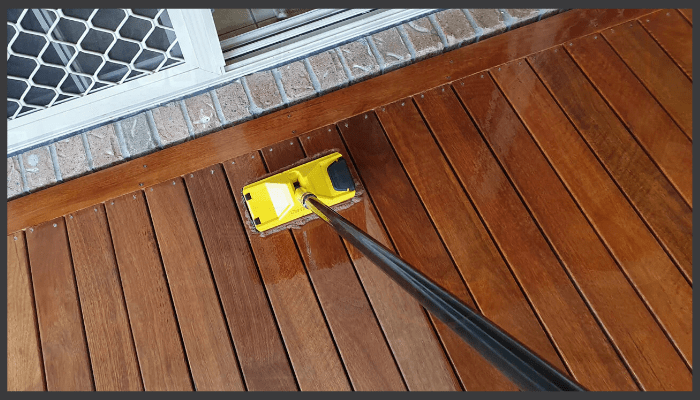Best Construction Tips for Installing Spotted Gum Decking on a Commercial Site
Table of Content:
-
Why Spotted Gum Is an Excellent Choice for Commercial Decking
-
Pre Installation Considerations for Spotted Gum Decking Timber
-
Subframe Construction and Installation Process
-
Compliance with Australian Standards and Building Codes
-
Finishing Touches for a Long Lasting Deck
-
Cost-Effective and Sustainable Decking Material Choices
-
Expert Construction Tips for Installing Hardwood Decking on Commercial Sites
-
Maintaining a Spotted Gum Deck for Long Term Performance
-
Conclusion
-
Frequently Asked Questions
Tips for Installing Spotted Gum Decking on a Commercial Site often start with understanding why this timber is chosen: spotted gum is tough, fire-resistant, visually appealing, and long-lasting.
Installing spotted gum decking on large commercial sites requires careful planning and adherence to commercial standards.
This article shares key tips for installing spotted gum decking on a commercial site. It covers subframe construction, finishing touches, and long-term maintenance.
Follow these steps to ensure your outdoor decking lasts for decades.
Why Spotted Gum Is an Excellent Choice for Commercial Decking
The Natural Durability and Strength of Spotted Gum Timber
Spotted gum has Class 1 durability for hardwood. Its heartwood resists decay and termites naturally, even when used above ground, so no chemical treatment is needed.
This makes spotted gum perfect for outdoor decking, especially in busy commercial areas. It also performs well in harsh weather across NSW.
Its density and strong structure help it stand out among other timbers.
Visual Appeal and Aesthetic Value in Outdoor Areas
Spotted gum decking timber is not just strong; it also offers natural beauty and an attractive look.
Rich colors from mid to dark brown add warmth and beauty to outdoor spaces in commercial developments.
Spotted gum decking looks great and works well in plazas, terraces, or rooftop decks. Just keep the spacing consistent and use quality finishes.
Pre Installation Considerations for Spotted Gum Decking Timber
Planning and Preparing the Site
Smart installation starts with getting the ground ready properly. Clear out debris or vegetation, sort drainage away from your decking project area, and level the site substrate completely.
CHH's decking installation guide says that commercial decks should be at least 400mm above ground. This height helps with ventilation and prevents moisture issues.
Poor ventilation traps moisture and kills your deck early.
Acclimatising and Handling Hardwood Boards
After delivery, rest your decking boards off the ground on bearers, keeping them sheltered from sunlight and rain.
Coat all four sides and the ends of the board with seal or preservative before installing. This helps prevent uneven moisture absorption and cupping.
WoodSolutions notes that external gum decking timber must consider shrinkage of about 6%. It also needs to reach equilibrium moisture content when exposed.
Check boards for defects like warping, insect damage, splits or knots before fixing them down. Only solid boards belong on a commercial project where durability matters most.
Subframe Construction and Installation Process
Building a Strong Subframe
Your subframe needs to handle heavy point loads, live loads, and tough commercial use. AS/NZS 1170.1 gives guidance on live and point loads; commercial decks typically design for 4 kPa or greater.
Space joists no more than 450mm centres for hardwood decking. Meyer Timber's install guide recommends 450mm c/c spacing for 19mm spotted gum decking boards.
Cross block joists to stop twisting, and keep the subframe raised with minimum clearance (150 to 200mm) above ground. Use materials rated for exposure, like H3 or H4 treated bearers.
Also, use hardwood joists. Avoid wood contacting soil unless it’s preservative treated per AS 1604.
Fixing Decking Boards and Screws
Pre drill holes in spotted gum to about 80 percent of the fastener shank to prevent splitting. Use corrosion-resistant decking screws or stainless steel fasteners.
This helps prevent corrosion damage, especially in coastal NSW. Fix each board at every joist crossing, using two screws per joist for your decking project.
Allow for expansion and contraction: maintain consistent spacing of at least 4 to 6mm; wider gaps (6 to 10mm) work better in shaded or humid areas.
According to WoodSolutions, gaps let timber move and drain properly. Stagger butt joints across adjacent board runs and back cut unseasoned boards to close gaps after drying.
Meyer's spec guide suggests 3 to 4mm gaps for 90mm boards, 5 to 6mm for 140mm boards.
Compliance with Australian Standards and Building Codes
Fire Safety and BAL Ratings
Spotted gum is a top choice for BAL 29 performance. It’s ideal for many bushfire-prone areas, especially when outdoor decking is 18mm thick or more.
CHH lists spotted gum among BAL 29 species. For BAL 40 or flame zones though, non combustible elements might be needed around the deck perimeter.
Comply with AS 3959 and local council requirements for fire zones.
Termite and Corrosion Protection
Spotted gum naturally resists termites. However, commercial sites still need termite barriers and collars to meet NCC 3.1.3.
Use stainless or hot-dip galvanized fixings in all exposed areas. Also, grease bolts that touch preservative-treated timber to prevent corrosion, as per AS 1650.
Finishing Touches for a Long Lasting Deck
Applying Oils, Stains, or Sealants
Protect against UV damage and keep that natural colour by applying water repellent preservative or decking oil. Seal all faces before installation then coat again after laying your deck.
Many commercial projects pick tinted oils to slow greying. Skip heavy film coatings that peel under foot traffic in your outdoor area.
Regular Cleaning and Maintenance
Establish regular cleaning schedules. Sweep away dirt and debris. Rinse with a gentle detergent. Avoid pressure washing, as it can damage the grain.
Regularly check for loose fasteners, cupping or corrosion issues. Recoat your outdoor space every 2 to 5 years.
This depends on how much sun it gets and any loss of sheen. Doing this helps keep it looking great and protected.
Cost-Effective and Sustainable Decking Material Choices
Maximising Material Efficiency
Since spotted gum ranks as premium Australian hardwood, cutting waste plays a crucial role.
Use full board lengths where possible, nest cuts properly, and coordinate board sizes to reduce offcuts.
Over order slightly (5 to 10 percent) for defects you'll find.
The Long Term Value of Spotted Gum Decking
Though it costs more upfront than treated pine or composite options, spotted gum decking timber often outlasts them all.
Its Class 1 durability gives Spotted Gum decking an average lifespan of 40 years or more when properly maintained. It also requires little upkeep, making it a great choice for busy commercial spaces.
Expert Construction Tips for Installing Hardwood Decking on Commercial Sites
-
Always pre seal boards on all four sides to reduce moisture uptake before installing.
-
Keep consistent spacing throughout to allow proper drainage and expansion.
-
Use joist protection like tape or sealant under boards, prolonging the subframe's life.
-
Never make metalwork cuts on site using saws or grinders on boards, as metal shavings cause black spotting.
-
CHH warns against cutting metal on timber surfaces.
-
Tighten bolts again after roughly 6 to 12 months as the structure settles in.
-
Coordinate electrical and plumbing trades early. This helps avoid cutting through boards later.
Maintaining a Spotted Gum Deck for Long Term Performance
Over its life, spotted gum decking stays easy to maintain and seal with regular care. Here's your simple checklist to maintain and seal spotted gum decking for long-term performance:
-
Regularly check for loose screws and tighten when needed.
-
Re oil or restain faded areas every few years.
-
Sweep and wash to prevent dirt and debris damage.
-
Watch for insect damage or splitting and fix small areas quickly.
-
Keep plants, mulch and water sources away from the decking surface to reduce moisture loading.
Conclusion
Installing spotted gum decking on a commercial site requires:
-
Attention to detail
-
Compliance with Australian standards
-
Proper subframe construction
-
Consistent finishing
These steps ensure quality and safety.
To keep your outdoor decking durable and attractive, follow these tips. With its proven strength, fire resistance, and low maintenance, spotted gum is the best choice for commercial decking projects across NSW.
This way, your decking will need less maintenance and last for years.
For premium spotted gum decking timber, reach out to Pinus Sawmills. They offer expert help on choosing decking boards and supply across NSW.
Get the support you need for your next commercial project.
Frequently Asked Questions
Is Spotted Gum decking suitable for commercial sites?
Yes, its natural resistance, termite protection and fire rating make spotted gum an excellent choice for high use decks.
How wide should spacing be between boards?
Aim for 4 to 6mm gaps (wider in shade/humidity). Too narrow causes cupping; too wide wrecks visual appeal.
How often do I need to maintain or re oil the deck?
In NSW conditions, every 2 to 5 years for decks getting moderate exposure. Heavy sun or coastal zones need more frequent recoating.
Can I install Spotted Gum decking in bushfire prone areas?
Yes, up to BAL 29 if boards measure 18mm thick or more, though extra precautions apply for higher BAL zones under AS 3959.
Are stainless or galvanised screws necessary?
Absolutely. Use stainless or hot dip galvanized fixings, especially in coastal areas. This helps prevent corrosion over time.
What's the best board width for reducing warping and movement?
Narrower boards (70 to 90mm) manage expansion/contraction better. Wider boards work if gaps increase and spacing stays consistent, which is one of the key tips for installing spotted gum decking on a commercial site.




